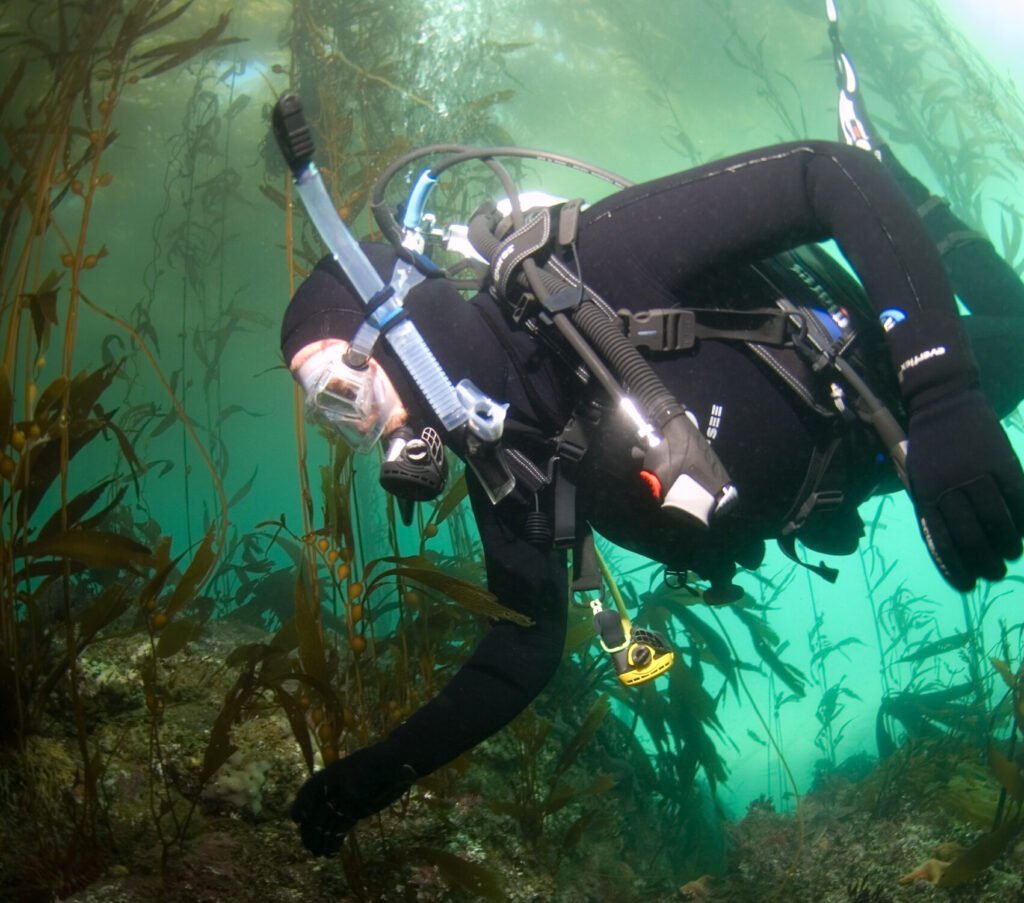Frequently Asked Questions
Monterey Bay is famed for its exceptional diving, offering nutrient-rich waters and diverse marine life supported by the nearby Monterey Submarine Canyon. Here, you can explore kelp forests, rocky reefs, shale beds, and sandy bottoms. Whether you’re a novice or an experienced diver, our FAQ page covers everything you need to know about diving in Monterey, from essential gear and water conditions to certification courses and top dive sites.
Monterey bay is considered by many to be one of the best diving regions on the planet. The cold, plankton-rich waters, combined with the close proximity to the Monterey submarine canyon supports one of the richest ecosystems known. Depending on your desires, you can dive the kelp forests, rocky reefs, shale beds, or sandy bottoms.
For most divers, the main attraction is the kelp forest. While the kelp is itself a beautiful sight, it also provides shelter for many fishes that hover motionless among the fronds. As you explore the rocky bottom that the kelp is anchored to, you will discover colorful anemones, nudibranchs, algae, sponges, and many other organisms.
Northern California is considered cold water diving, and the underwater temperature is usually between 50-55 degrees F. While that sounds, and indeed IS cold, the good news is that YOU don’t have to be cold when diving here. A 7mm wetsuit with a hood and gloves keeps most people comfortable in the water, and if more warmth is desired, a drysuit will keep you even warmer.
Visibility varies from a few feet on bad days to 40 feet on great days. Typically visibility in Monterey ranges from 15-25 feet, and 20-45 feet in Carmel. On occasion visibility can reach 100 feet in Carmel.
Absolutely. Taking your certification course locally has many advantages. First, Monterey can be a challenge for divers certified in tropical waters, but if you learn to dive here, you’ll start diving with the skills and knowledge required to safely dive here and almost anywhere else. Second, taking a course locally provides you with more time to hone your skills and knowledge, while “resort” courses are often more compact in order to fit into a vacation schedule. And finally, you’ll learn how to dive in your own backyard, so diving won’t be a once-a-year activity.
All shops differ in how they price their certification courses. Some will quote you the price for the course alone, with required gear rental and purchase being beyond that rate. Others price a complete package that includes your tuition and rental. Still others will quote you separate fees for classroom, pool, and ocean sessions. While this makes things confusing, the shops all have reasons for quoting their courses in such a manner.
Typically, you can expect to spend about 500 dollars to get certified. This includes the cost of the course, rental fees, materials, and gear that you may be required to purchase such as a mask, fins, snorkel, etc.
As for how long it will take to get certified, typical certification programs consist of 4-5 classroom sessions, 4-5 pool sessions, and two days diving in the ocean. Depending on the shop, the course may be consolidated into fewer longer sessions. Those “abbreviated” courses usually take place over the span of 3 weeks, while the longer format lasts 5 weeks. But no matter what format a shop offers, the total number of hours spent training is the same.
Taking an advanced course through your local shop is typically the best way to get the proper orientation to local dive sites. Some shops may even offer local orientation dives, or you can hire one of the many local divemasters to introduce you to local diving.
Yes. In fact, the huge majority of dives conducted in Monterey are shore dives. Check out the site descriptions located on this site for information.
